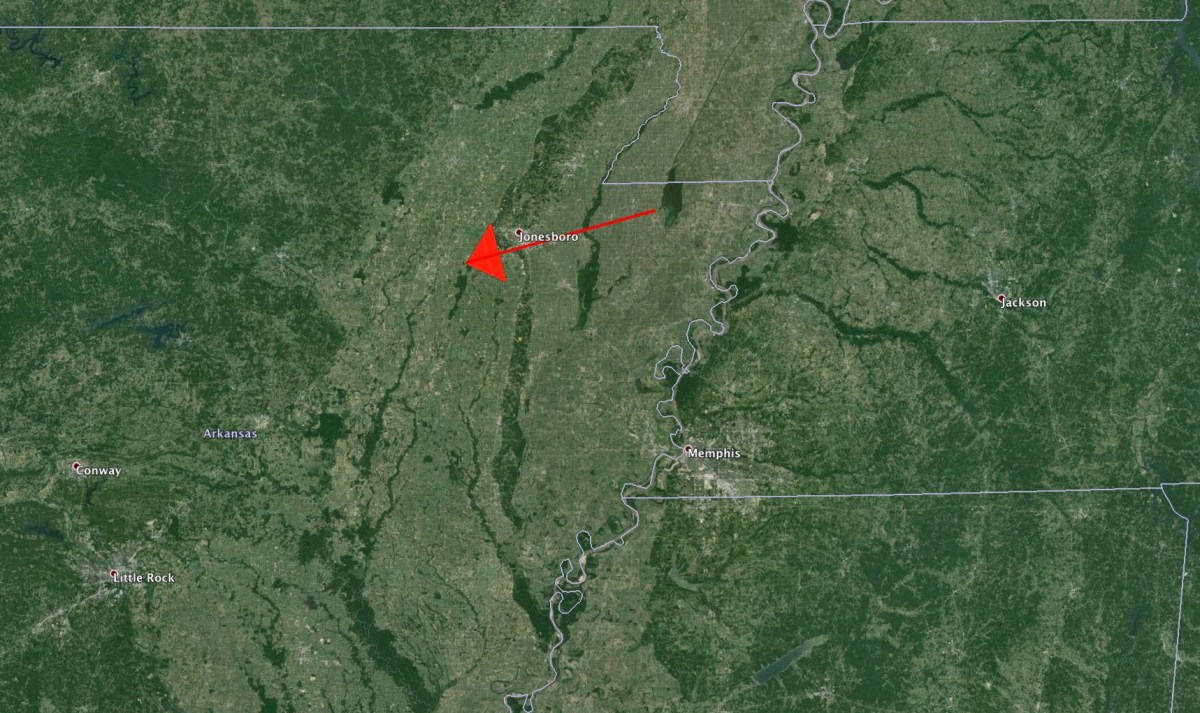We have completed our analyses and here’s what we know:
At 10:19 PM Central Daylight Time on August 2 (Saturday night), NASA meteor cameras detected a very bright fireball at an altitude of 57 miles above Hoodoo Road just east of the town of Beechgrove, TN. The meteoroid, which was about 15 inches in diameter and weighed close to 100 lbs, travelled just over 100 miles to the south south east at 47,000 miles per hour, breaking apart in a brilliant flash of light above the Alabama town of Henagar. The cameras continued to track a large fragment until it disappeared 18 miles above Gaylesville, located near Lake Weiss close to the Georgia state line. At last sight, the fragment was still traveling at 11,000 miles per hour. Based on the meteor’s speed, final altitude, and weak doppler radar signatures, it is believed that this fireball produced small meteorites on the ground somewhere between Borden Springs, AL and Lake Weiss.
The meteoroid’s orbit has its farthest point between the orbits of Mars and Jupiter, and is inclined to that of the Earth (which explains its southerly direction).
Check out the video!
The NASA Meteoroid Environment Office would like to hear from those in the area around Alabama’s Lake Weiss who may have heard sonic booms or like sounds around 10:20 PM Saturday night. Please contact Dr. Bill Cooke at william.j.cooke@nasa.gov if you have reports of such.














